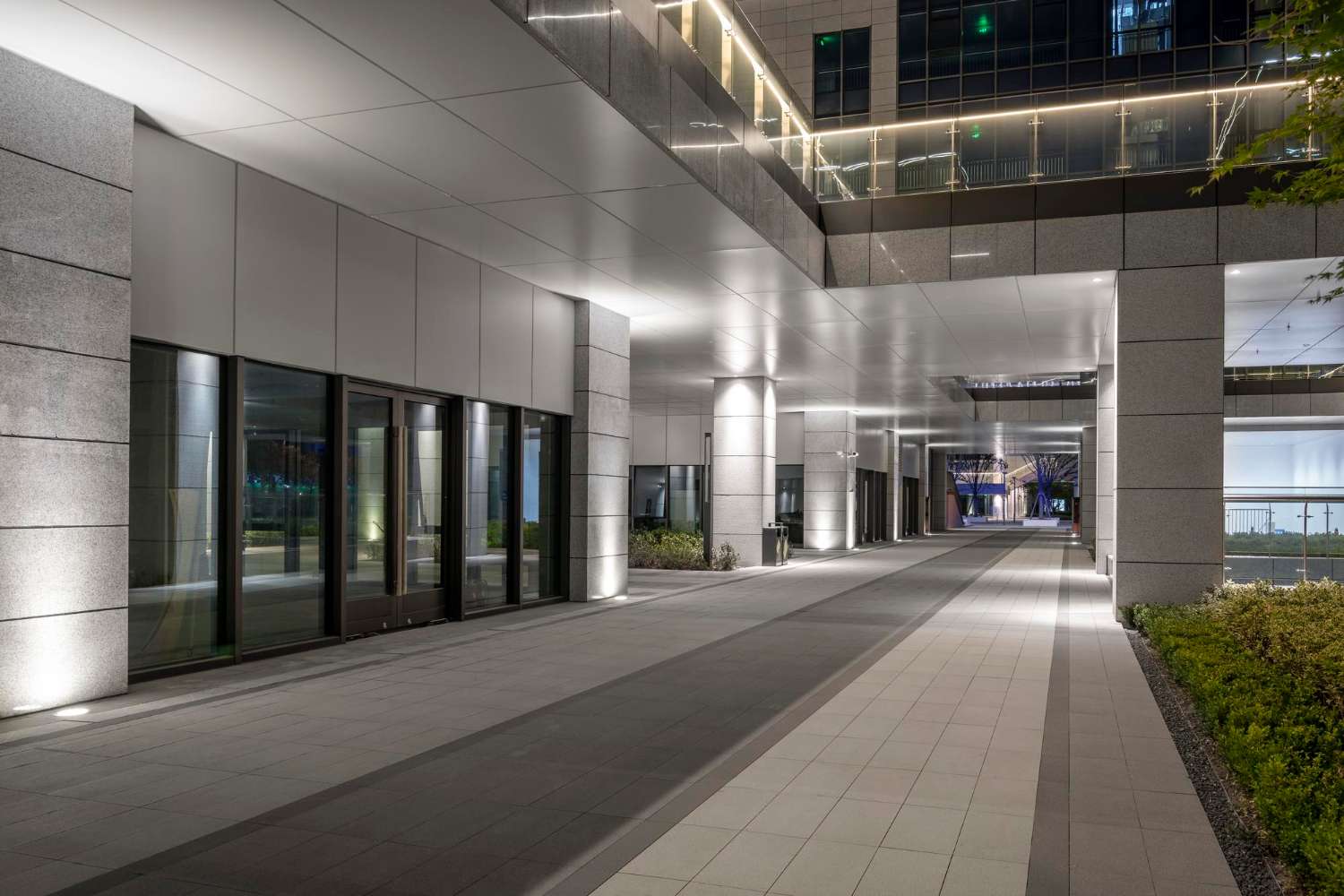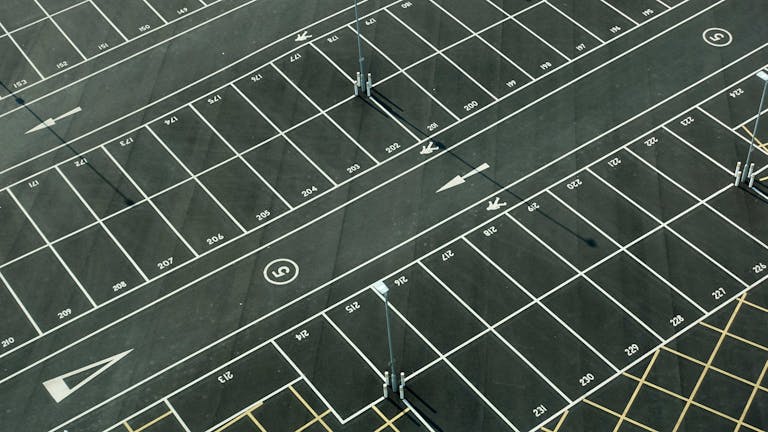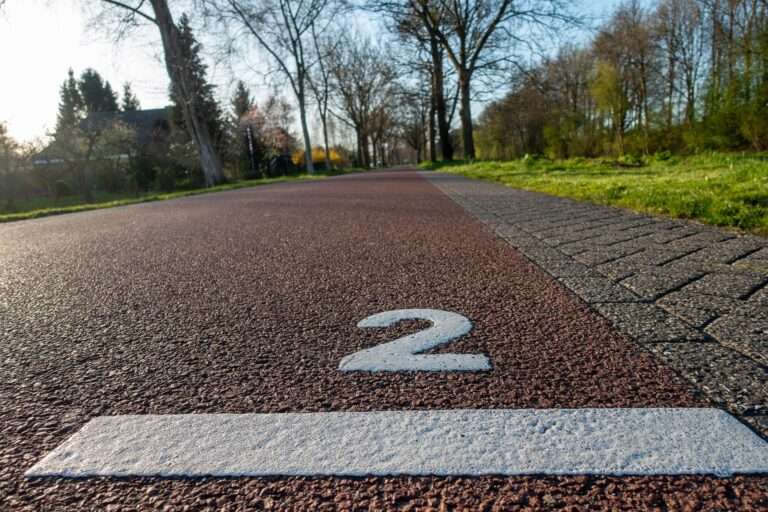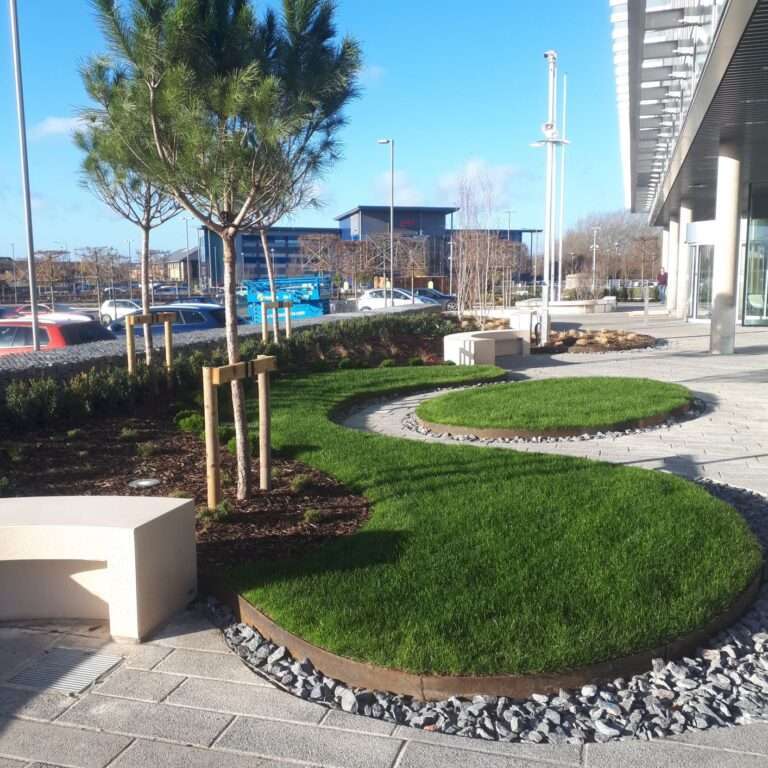9 Smart Pathway Design Ideas That Instantly Improve Commercial Landscapes
When it comes to commercial properties, first impressions count. Whether you’re managing a business park, retail development, public sector facility or educational campus, well-designed pathways are vital. They guide foot traffic, enhance accessibility, boost safety, and elevate the overall appearance of your space.
But commercial pathway design isn’t just about laying slabs or tarmac. It’s about creating a visually appealing and functional route that serves employees, clients, and visitors alike—all while being durable enough to withstand heavy use and unpredictable UK weather.
In this blog, we’ll walk you through key pathway design strategies for commercial properties, answer common questions, and provide inspiring ideas that balance practicality with polish.
Why Pathway Design Matters in Commercial Spaces
Pathways do more than connect buildings—they define the experience of a site. Poor layout, slippery surfaces, or awkward turns can frustrate users and lead to safety issues. On the other hand, thoughtful design boosts navigation, improves flow, and reflects your brand’s professionalism.
Benefits of a well-planned pathway:
| ✅ Benefit | 💬 Description |
|---|---|
| Improved Accessibility | Ensures all users, including those with mobility challenges, can navigate safely. |
| Enhanced Aesthetics | Complements surrounding landscaping and architecture. |
| Durability | Designed to withstand heavy footfall, weather, and time. |
| Health & Safety Compliance | Reduces risks of slips, trips, and uneven surfaces. |
| Brand Image | A polished, functional exterior makes a strong visual statement. |
1. Match the Material to the Purpose
Choosing the right surfacing material is the foundation of great pathway design. Your selection should be driven by usage levels, aesthetic goals, budget, and maintenance expectations.
| Material | Best for | Pros | Cons |
|---|---|---|---|
| Block Paving | Entrances, plazas, decorative areas | Visually appealing, flexible design | Higher cost, may need re-levelling |
| Tarmac | Long walkways, service routes | Cost-effective, durable | Less decorative |
| Concrete | High-traffic areas, public spaces | Hard-wearing, modern finish | Can crack without proper base |
| Resin Bound | Stylish, low-traffic areas | Smooth, permeable, attractive | Costlier than tarmac |
| Gravel | Rural or natural sites | Inexpensive, permeable | Can be messy, not ideal for wheelchairs |
Tip: Combine materials for a practical yet attractive effect—e.g. tarmac for main routes with block paving accents at entry points.
2. Design with Flow in Mind
A common mistake in pathway design is ignoring natural foot traffic patterns. People will naturally take the quickest route between two points—design should follow this “desire path” logic.
🡒 Use curved paths to make routes feel more spacious and harmonious.
🡒 Avoid sharp turns or tight corners, especially near entrances and car parks.
🡒 Ensure continuity from parking zones to building entrances, avoiding any trip hazards or confusing intersections.
3. Incorporate Subtle Wayfinding
Clear directional cues are essential in larger commercial landscapes like campuses or business parks.
Add subtle wayfinding by:
- Using different paving textures or colours
- Integrating arrow patterns or nameplates in the surface
- Incorporating low-level lighting to highlight edges at night
This removes the need for too much signage, keeping the landscape tidy and intuitive.
4. Think Long-Term with Drainage and Sub-Base
Durability starts below the surface. Failing to invest in proper sub-base and drainage will shorten the lifespan of your pathway and could result in costly repairs.
Key considerations:
- Permeable materials allow water to soak through, reducing surface pooling
- Camber or gradient should direct rainwater away from main routes
- Geo-grids and compaction prevent ground movement in high-load areas
5. Add Kerbs and Edging for Structure
Kerbs and edging aren’t just decorative—they prevent pathway surfaces from shifting and help contain planting beds.
Great options include:
- Natural stone for a premium look
- Concrete kerbs for practicality and durability
- Steel edging for modern, minimalist schemes
6. Include Rest Zones and Seating
For large commercial landscapes, build in areas for users to pause. This is especially important for staff or visitors with reduced mobility.
🪑 Install benches, seating walls, or informal rest spots along longer paths.
Bonus: These rest zones can double as landscaped features, adding visual interest and encouraging social interaction.
7. Use Lighting to Extend Usability
Lighting is critical for both safety and aesthetics. For 24/7 commercial sites, dusk-to-dawn usability is a must.
💡 Use pathway bollards or recessed ground lighting
💡 Add motion-sensor lights for energy efficiency
💡 Avoid upward-facing lights which can cause glare or light pollution
8. Blend Hard and Soft Landscaping
The best pathway designs feel like part of the landscape—not an afterthought.
🪴 Combine planting with your paths by:
- Adding low hedges or ornamental grasses along edges
- Softening lines with wildflower borders
- Creating green corridors between buildings
This not only boosts visual appeal but contributes to Biodiversity Net Gain (BNG) and sustainability goals.
9. Prioritise Compliance and Safety
In the UK, all commercial pathways must comply with relevant building and access regulations. These include:
- Equality Act 2010: Ensuring access for wheelchair users and those with visual impairments
- Slip resistance standards: Especially for resin or stone finishes
- Minimum width requirements: At least 1.2m wide in most cases
Avoid trip hazards, loose surfaces, and sharp gradients—and include tactile paving at crossings or changes in level.
Explore Our Pathway Construction Services
At Killingley, we’ve delivered durable, stylish and fully compliant pathway solutions for commercial clients across the UK. From material sourcing to full installation, we handle every detail with care, efficiency and safety in mind.
🛠️ Find out more about our car park and pathway construction services
Conclusion
Well-designed commercial pathways do more than just connect spaces—they enhance safety, support accessibility, reinforce brand identity, and leave a lasting impression.
By considering materials, flow, lighting, landscaping, and compliance from the start, you can create a pedestrian experience that’s both practical and pleasing.
If you’re planning a new build or upgrade, now’s the time to invest in intelligent pathway design. Let the path speak for your business—make it functional, make it attractive, and above all, make it last.
Killingley Insights is the editorial voice of NT Killingley Ltd, drawing on decades of experience in landscaping, environmental enhancements, and civil engineering projects across the UK.








